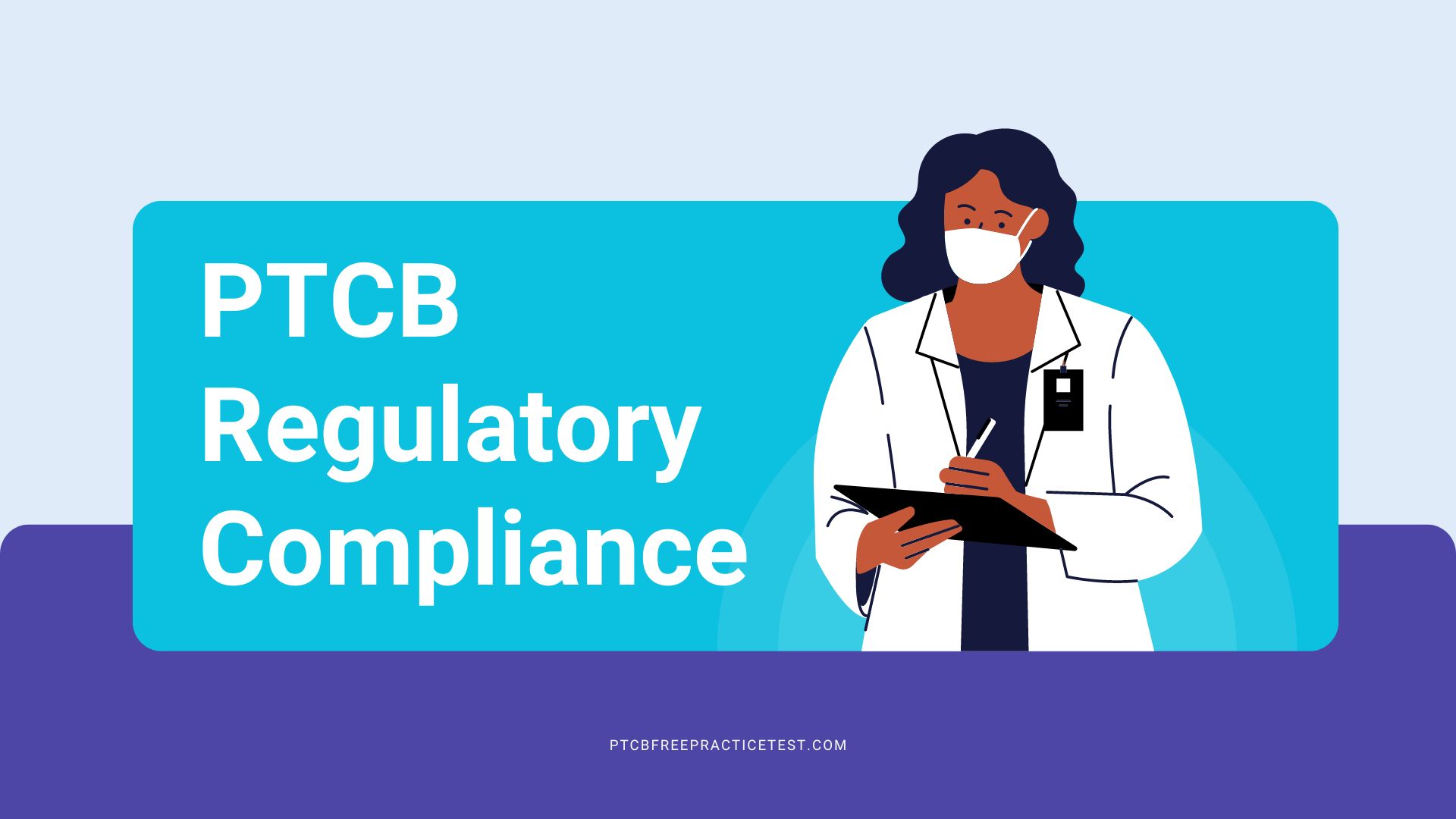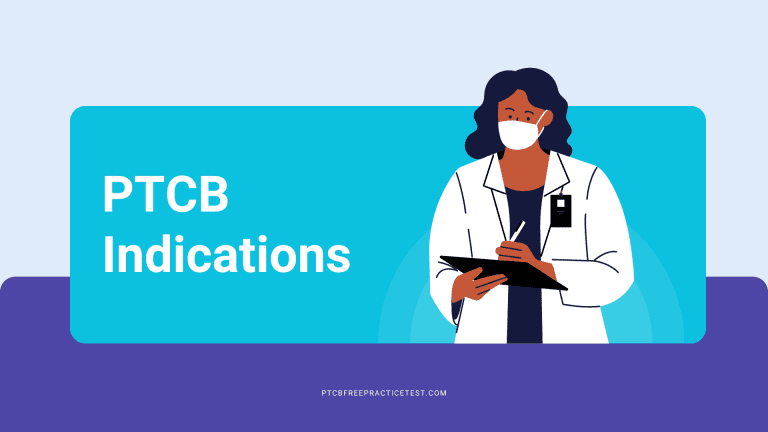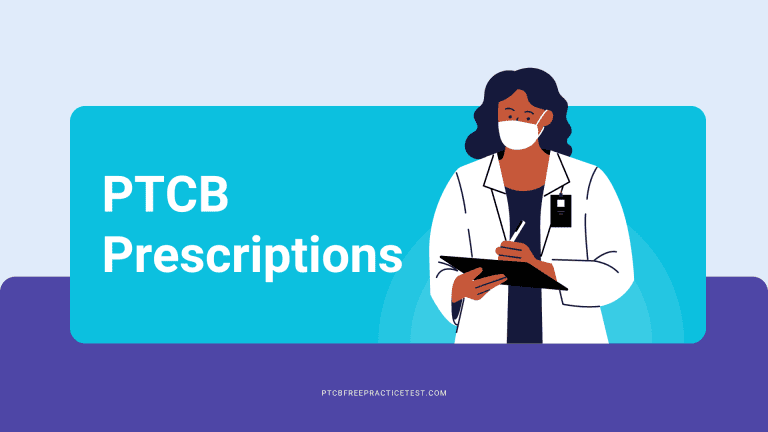Book Appointment Now

PTCB Regulatory Compliance Practice Test
Welcome to the PTCB Regulatory Compliance Practice Test.
This practice test will help you prepare for the Pharmacy Technician Certification Board (PTCB) Regulatory Compliance Exam. The exam assesses your knowledge of the laws, regulations, and standards that govern pharmacy practice.
To successfully pass the exam, it is crucial to have a thorough understanding of federal and state pharmacy laws, controlled substance regulations, medication safety practices, and quality assurance strategies.
PTCB Regulatory Compliance Practice
Results
Congratulations! You Passed the Test!
You have successfully demonstrated your knowledge of regulatory compliance in pharmacy practice. Your dedication to understanding the laws, regulations, and standards that govern the pharmacy profession is evident.
This achievement reflects your commitment to maintaining the highest standards of patient safety and ethical practice in the pharmacy field. Well done, and best of luck in your continuing career as a pharmacy technician!
Unfortunately, You Did Not Pass the Test
Despite your efforts, you did not achieve a passing score on the regulatory compliance exam. Don’t be discouraged; this is an opportunity to identify areas where you can improve your understanding of the laws, regulations, and standards in pharmacy practice.
Review your study materials, focus on the topics where you struggled, and consider seeking additional training or resources.
With persistence and dedication, you can succeed in your next attempt. Keep working hard, and best of luck in your continued preparation!
#1. What is a useful technique to avoid pharmacy errors?
#2. What is the maximum amount of pseudoephedrine that a pharmacy may provide to the same person in one day?
#3. How does the FDCA classify a product that is intended for ingestion to supplement the diet, and that contains a vitamin, mineral, herb, amino acid, or concentrate?
#4. What is the standard technician to pharmacist ratio as recognized as applicable to all pharmacy practice sites?
#5. How does the FDA classify those drug products that are capable of being labeled with adequate directions for use by patients who are using the drugs without medical supervision?
#6. Under the OBRA-87 legislation, what category of pharmacist must conduct a drug regimen review at a long-term care facility?
#7. What ethical principle in pharmacy stresses that similarly situated persons should be treated similarly, and differently situated persons should be treated differently?
#8. For Schedule III prescriptions, refills are permitted up to how many times in a six-month period following the date of issuance, if authorized by the prescriber?
#9. What supplemental information for patients is considered mandatory?
#10. On what basis may a pharmacist be disciplined by the board of pharmacy?
#11. What law allows HHS during a pandemic to authorize pharmacists and technicians to perform professional activities that might otherwise be forbidden under state law?
#12. What type of credential serves as a means to identify those who are working in a healthcare setting, but who are not necessarily licensed as professionals?
#13. Which of these is considered a traditional prescriber?
#14. When a local pharmacy transmits a C-II prescription by facsimile to a central fill pharmacy, who retains the original hard copy prescription?
#15. What is an effective means for getting rid of unwanted PHI according to the HIPAA law?
#16. According to the CNA/HPSO Report, of the following malpractice against pharmacies, which is the most common?
#17. What are the usual qualifications for pharmacy technician licensure/registration/certification?
#18. Under what circumstances may a C – II prescription be refilled?
#19. How can a pharmacy violate the FDCA?
#20. Which of these tasks is usually permitted for a technician, with pharmacist supervision?
#21. In what branch of government is the state board of pharmacy located?
#22. According to HRSA, what does “quality improvement” mean?
#23. A patient presents a controlled substance prescription from a physician assistant (PA). What letter would the pharmacy expect to be at the beginning of the PA’s DEA registration number?
#24. What DEA rule specifies that a pharmacist may not “knowingly” fill a purported prescription?
#25. In what area of medical practice are off-label uses particularly likely to be considered standard therapies?
#26. Under federal law, for how long must pharmacy controlled substance records be maintained after their creation or last use?
#27. Where must C-II products that were “shorted” from the distributor be noted as having been ordered but not delivered?
#28. How is the USP recognized under federal law?
#29. What pharmaceutical product regulation is generally within the authority of state regulators?
#30. To determine whether a drug has been approved, what reference should be used?
#31. Under the DATA law, physicians who qualify are given a special DEA number in addition to their regular DEA registration number. With what letter does this special DEA number begin?
#32. What age requirement does federal law impose for non-prescription sale of Schedule V anti-diarrheal products containing opium that are not Rx-only products?
#33. When there are differences in federal and state law that are not in direct conflict, what is the best practice for pharmacy?
#34. What branch of government promulgates regulations?
#35. Why are most pharmacies subject to the False Claims Act?
#36. When a prescriber issues multiple C-II prescriptions on the same day, with instructions for periodic later dispensing, what total day’s supply may be authorized?
#37. What process is used by government agencies to authorize the conduct of healthcare at a practice site?
#38. How does the OBRA – 90 standard require documentation of the offer to provide consultation or a refusal of such offer by a patient?
OBRA-90 requires pharmacists to offer counseling to patients on new prescriptions and to document this offer and the patient’s response. However, the law does not specify a particular method for this documentation. Pharmacies can choose to document these interactions either electronically or on paper, depending on their own systems and preferences.
#39. Under what circumstances may a controlled substance prescription be post – dated?
#40. How must pharmacies handle suspect and illegitimate pharmaceutical products under the DSCSA?
#41. To permit a 60-day partial filling of a C-II prescription, who must record either “LTCF Patient” or “Terminally Ill Patient” on the Rx?
#42. What crime will result in an individual being placed on the OIG Exclusion list following a conviction?
#43. When a pharmacy transfers refills of a C-IV prescription from one pharmacy to another, what must the transferring pharmacist note on the transferred prescription?
#44. When a patient’s PBM will only pay for a generic product, but the prescription does not allow substitution of a generic under state law, what step must the pharmacy take?
#45. Under the OBRA-90 standard for ProDUR, what potential problem with drug therapy is specifically listed for pharmacist screening?
#46. What change may a pharmacist make to correct misinformation in a C-III through C-V prescription?
#47. Who may communicate a controlled substance prescription to a pharmacist?
#48. Where will a pharmacy find standards for compounding of sterile products?
#49. Who is legally responsible for regulatory compliance at a pharmacy practice site?
#50. What organizations collect and analyze data voluntarily reported by healthcare providers to help improve patient safety and healthcare quality?
#51. What does the OIG (Office of Inspector General) in DHHS monitor?
#52. What are ETASU (Elements to Assure Safe Use)?
#53. What is the FCA (False Claims Act)?
#54. What is the OBRA 87?
#55. What is a DRR (Drug Regimen Review)?
#56. What is OBRA-90 (Omnibus Budget Reconciliation Act of 1990)?
#57. What does the DEA (Drug Enforcement Agency) enforce and track?
#58. What is the FDA responsible for?
#59. What are REMS (Risk Evaluation and Mitigation Strategies)?
#60. What does the NRC (Nuclear Regulatory Commission) do?
#61. What are USP 797 guidelines for?
#62. What is the purpose of the PPPA (Poison Prevention Packaging Act) of 1970?
#63. What is a CRC (Child Resistant Container)?
#64. What is the DSCSA (Drug Supply Chain Security Act)?
#65. What does the FDCA (Federal Food, Drug, and Cosmetic Act) regulate?
#66. What is the purpose of the PREP Act (Public Readiness and Emergency Preparedness Act)?
#67. What is the primary purpose of the HIPAA (Health Insurance Portability and Accountability Act)?
#68. Which entity is responsible for issuing a National Provider Identifier (NPI) number to healthcare providers?
#69. Under the Combat Methamphetamine Epidemic Act of 2005, what is the maximum amount of pseudoephedrine a customer can purchase in a 30-day period?
#70. Which law requires drug manufacturers to prove that their drugs are safe and effective before marketing them in the United States?
Exam Details
- Number of Questions: 70 multiple-choice questions
- Time Limit: 1 hour and 30 minutes (including 5 minutes for a tutorial and 5 minutes for a post-exam survey)
- Passing Score: 300 on a scale of 0 to 400
- Knowledge Domains Covered:
- Laws, Regulations, and Guidelines (37%)
- Legal Requirements (33%)
- Practice Standards and Principles (30%)
Key Topics to Focus On
- Federal and state pharmacy laws and regulations
- Controlled substance regulations and DEA schedules
- HIPAA and patient privacy requirements
- Medication safety practices and error prevention
- Quality assurance strategies
- USP standards related to regulatory compliance
- Proper medication storage and disposal procedures
- Reporting of medication errors and adverse events
Good luck on your journey to certification!
Disclaimer: This practice test is for educational purposes only and is not an official PTCB exam. It is intended to help you prepare by familiarizing you with the types of questions you may encounter on the actual exam.

Founder of the PTCBFreePracticeTest.com.








number 18,34,21,50 doesnt seem right
18. no refill for c2
50 CSA isnt even a organization if anything shouldnt it be DEA
PSO
i feel like 37 should be licensing if someone can please explain some of these answers for me that would be great. ty
Yeah, you are right. It is licensing.